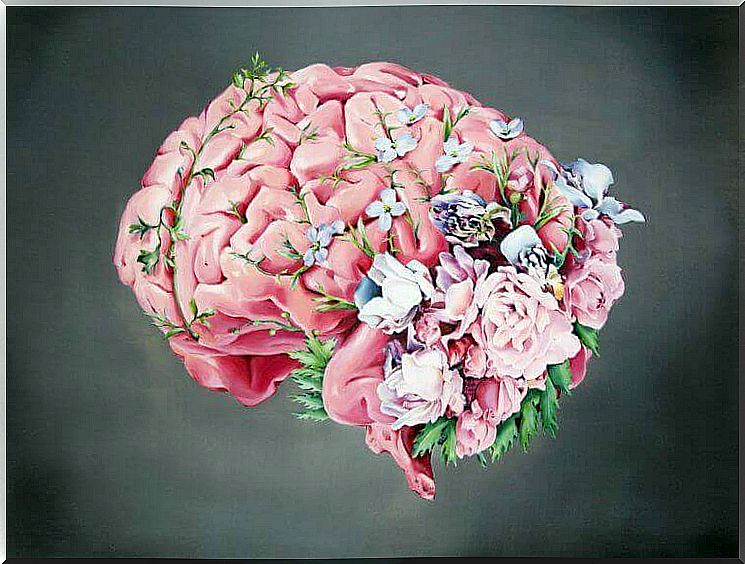Are You Plastic, Glass Or Steel? The Keys To Resistance

Are you plastic, glass or steel? How we deal with everyday difficulties determines the material we are made of. Nevertheless, the keys to resistance tell us that we always have time to modify the elements that shape us to clothe ourselves with a more optimal material, halfway between bamboo and graphene.
Understanding what kind of mechanism we use in the face of life’s obstacles is a decisive aspect of enjoying adequate mental and emotional well-being. Thus, two of the most common responses that we tend to apply in our daily lives are avoidance on the one hand and stillness or “non-resistance” on the other.
In this sense, the keys to resistance are an aspect directly linked to our well-being. So understanding them can help us tremendously.

Brains more and less resistant to emotional stress
Most of us have asked ourselves this question once: why are there people who are able to face adversity in such a sensational way? We admire their temperance, their optimism and their perception of being able to see possibilities where others see only walls with barbed wire. Have they prepared for this? Have they taken any classes, maybe they have some innate wisdom, or is there something different in their brains?
The key lies in this last aspect: in their brains. So, and curious as it may seem to us, there are people with brains that are much more resistant to stress, personalities with more emotional resources to calm anxiety, to avoid irrational mental speech in extreme situations, etc. The faculty of medicine Weill Corner, New York, made an interesting work which has been determined, for example, the existence of an r direct elation between education based on healthy attachment and a smarter deal with stress response and anxiety.

Insufficient attention, an education borrowing from certain affective deficiencies alters the cerebral development of children. Concretely, the structure most affected is the amygdala, a neurological control center as old as it is sophisticated, which is precisely responsible for regulating fear and emotions. So that a child who will have experienced any emotional deficit, will have greater difficulty in managing his emotions both during childhood and adulthood.
Are you plastic, glass or steel?
As we pointed out in the introduction, it doesn’t matter what kind of mechanism we use in the present to respond to difficulties, stress or adversity. It does not matter whether we are those who flee or those who, like a mast in the middle of a storm, stand still until they gradually break and fall. We are all capable of learning new strategies, and this is thanks to our brain plasticity.
Training / stimulating the brain to apply new approaches and renewed strategies makes it a more resilient, more skilled, more sophisticated machine. The goal is to make sure that our brain helps us not only to survive, but also to accompany us, that it supports us in a complicit way, in our attempt to be happier.
Therefore, let’s see below what are the three most common types of stress response and the resistance keys they usually use.
Steel’s response
Stress “bounces” off steel people. This type of approach, far from being beneficial, presents risks. Being completely impervious to stress will make us unable to learn from it. Moreover, no one is completely waterproof, no one is made of steel because our coating is purely emotional.

The key here is to understand that far from being a wall to problems and getting them to “bounce” off us, we need to equip ourselves with better skills in order to manage them, filter them, transform them…
The plastic response
Among the keys to resistance, it is interesting to know that most of us apply this strategy. Its characteristics are as follows:
- We have several brands, effects of stress and adversity.
- We are flexible and we also take advantage of some resistance, although we often feel that we are going to break up. It’s like living on a tightrope.
The glass response
As we can guess, the response of the glass is not the most appropriate. In reality, it is the worst of all, it is the one with the least resources, the one who, after having made a great effort to give in, to adapt, ends up breaking down. So that either we impose ourselves or we destroy ourselves totally.
Keys for a more healthy resistance
The keys to a more salutary strength tell us this: we have to hole worm an intermediate point between strength and flexibility, a place of maturity where we can manage, prioritize and transform. In other words, if for example we let our innate psychological defenses act, we will opt for the line of least resistance: that of glass.
On the other hand, if we choose the line of greatest resistance, we will use all of our energy to oppose something, to put up a wall protecting us from life. This is undoubtedly the steel strategy.

So, if neither of these two answers is the most appropriate, which one should we apply? The key to the most beneficial resistance is to build our self-confidence to know that we are worthy of something better. Therefore, we will not allow anything to overwhelm us to the point of breaking us, nor will we rise up like a steel pole bearing the impact of a storm.
Let’s build a material halfway between stronger plastic and bamboo. A flexible but strong material, which allows us to move according to the difficulties in order to learn from them, which even if it bends finds its original position after having accepted a teaching to move forward with more confidence.
Let’s start working on this vital strategy today.










